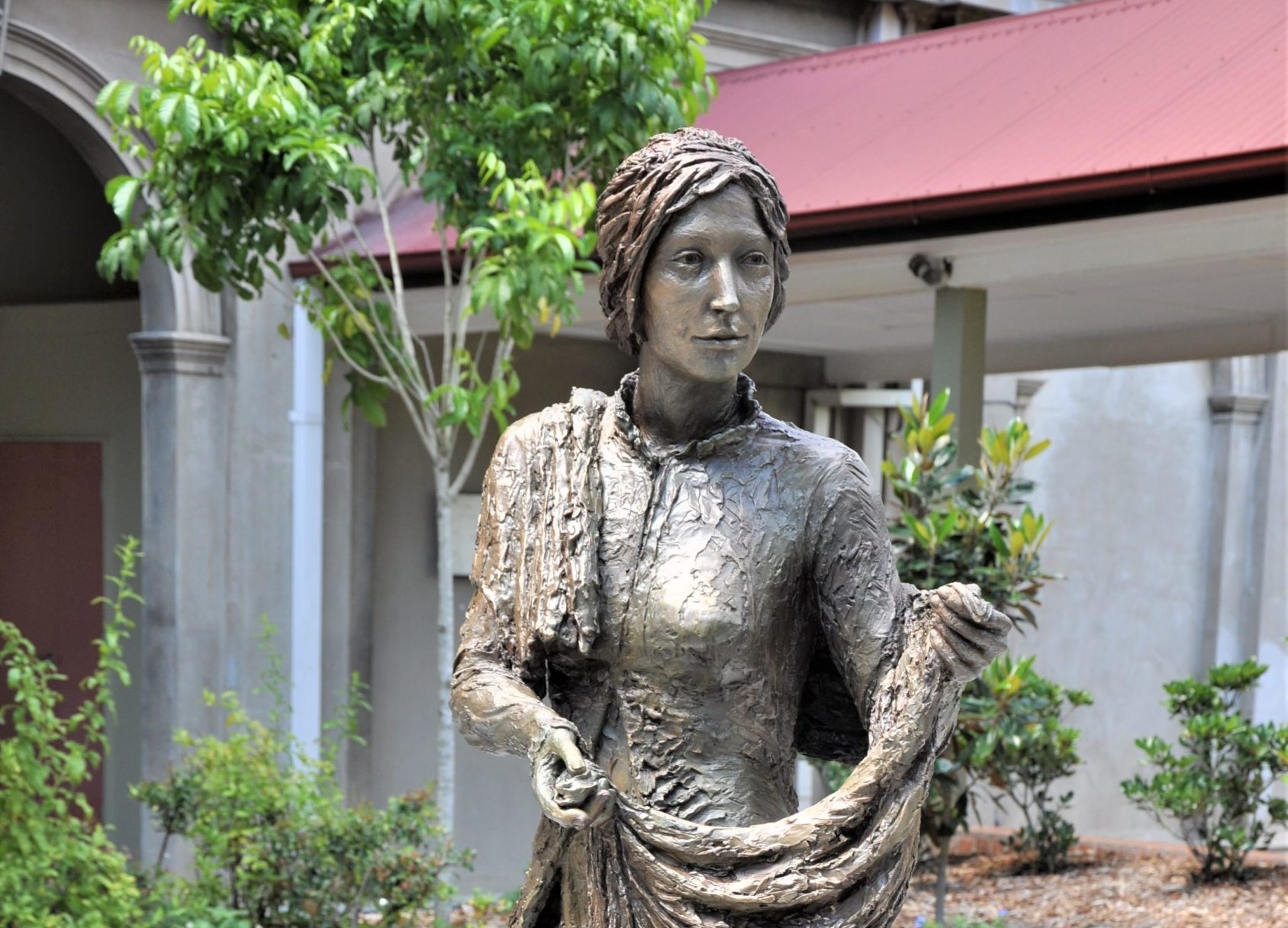During the time of Catherine McAuley’s birth Ireland was undergoing enormous change as some of the Penal Laws that stripped Irish Catholics of religious freedoms and nearly all their holdings including land were beginning to be relaxed. Catherine’s family were of the minority, as they had wealth and land.
As a young child Catherine had opportunities to walk the streets of Dublin with her father, James McAuley, who would spend time with the poor and vulnerable to provide them with food, money, and genuine care. Catherine and her father were said to be very alike, and he always knew she was “born to be great”. The time Catherine spent with her father profoundly impacted on her life.
Sadly, at the tender age of five, Catherine’s father died. When Catherine was twenty her mother passed away and at this time her siblings were sent to live with the Amstrong family, whilst Catherine stayed with her Uncle Owen Conway and his family. Ann Conway was thrilled to have her cousin Catherine live with her, but eventually Catherine too lived with the Armstrongs. Whilst there she met the Callaghans – Mr Callaghan, a Protestant and Mrs Callaghan, a Quaker.
In 1798 the Irish rebellion occurred; these dangerous times meant the Callaghans decided to move to the country to reside at Coolock. Ten years later Catherine also moved to Coolock to live with them. It was here she managed the household and became astute in business. For twenty years she cared for and accompanied the Callaghans, she was like a daughter to them and after their death it was revealed they had bequeathed their estate to her. She, like her father, used her new-found wealth to provide care for the poor of the streets, especially the women and children.
Catherine, a woman of means and intellect, decided to build a home in an affluent area to house, educate and care for women and children. On the Feast of Our Lady of Mercy, 24th September, the House of Mercy was completed and opened wide its doors. After opposition from the local parish priest over the work carried out at the House of Mercy, Catherine was forced to become a Religious Sister.
“I never intended founding a Religious Congregation; all I wanted was
to serve the poor since that seemed to be what God expected of me”
Catherine McAuley
Catherine (at 53 years of age) and two other women, Elizabeth Harley and Anna Maria Doyle, completed their novitiate at the Presentation Order at George’s Hill on 12 December 1831. Once home Catherine continued to help those on the streets and visit the hospitals. She and her sisters worked tirelessly nursing the afflicted during the cholera epidemic of 1832.
The Sisters of Mercy walked the slums, the prisons, the hovels and into the margins. They were known as the “walking nuns” because they spent their time on the streets with the poor, vulnerable and marginalised.
In her last days, Catherine McAuley instructed that the Sisters of Mercy would have a comfortable cup of tea together in the community room, after she had gone.
“Will you tell the Sisters to get a good cup of tea…
when I am gone and to comfort one another.”
Catherine McAuley
Guided by the values of their foundress, Catherine McAuley, the Sisters of Mercy have continued to achieve greatness amidst change, challenges and setbacks. And what began on the muddy banks of the Brisbane River 160 years ago with Mother Vincent Whitty has spread very quickly across the Eastern Seaboard of Australia. Thank you for your legacy Catherine McAuley, may it continue to grow in greatness.
On the Feast of Our Lady of Mercy, 24th September 2021, we would like to give thanks to the Sisters of Mercy who continue Catherine’s legacy and fruitfully engage in God’s mission today.
Reflection
How can you celebrate the charism and the gifts of the Sisters of Mercy?
